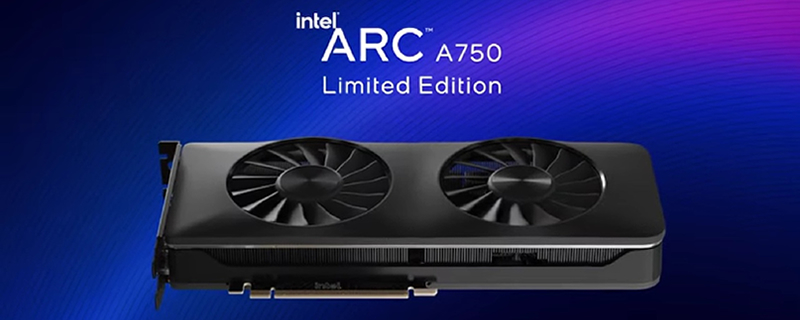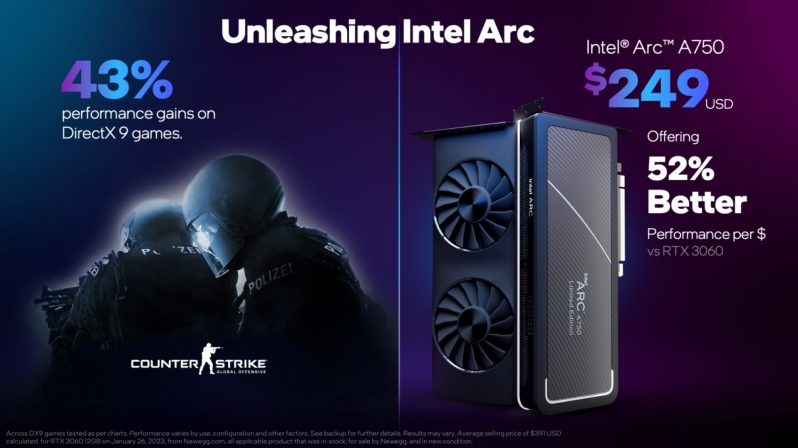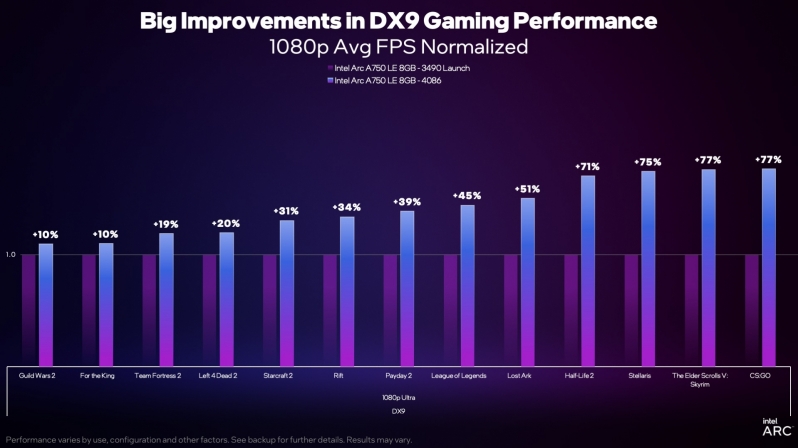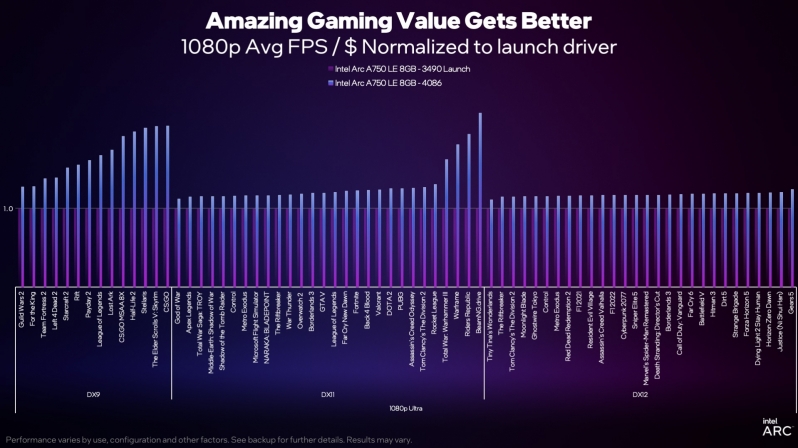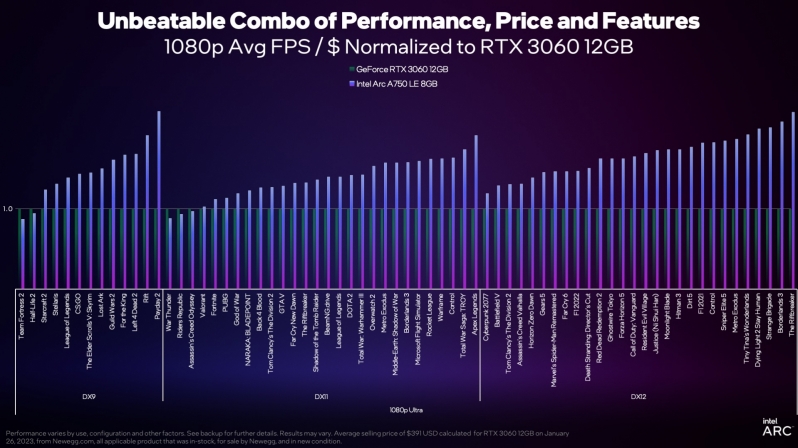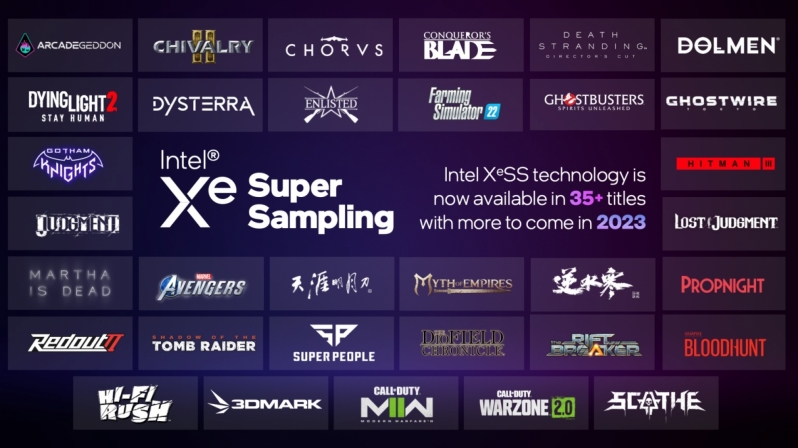Intel ARC Graphics Q1 update promises lower prices, stronger performance, and better drivers
Intel has delivered 43% performance gains in DirectX 9 with their latest ARC driversÂ
Intel entered the gaming GPU market in 2022 with the release of their ARC A750 and A770 graphics cards, finally adding a third major player to the GPU market to battle against AMD and Nvidia.Â
Rome was not built in a day, and while Intel have not yet created high-end products to challenge Nvidia’s RTX 4090 and AMD’s RX 7900 XTX, their early ARC GPUs bring much-needed competition to the mid-range GPU market. Sadly, early reviews uncovered a lot of problems with Intel’s 1st generation ARC products, problems that can mostly be attributed to driver issues. Simply put, it takes a lot of time to create strong GPU drivers for gaming, and Intel has a lot of ground to cover before they catch up with AMD and Nvidia.
The good news is that today Intel has issued their Q1 2023 update for their ARC Graphics odyssey, revealing a price cut for their ARC A750 and significant improvements to their ARC drivers.  Â
Price Drop
Intel’s ARC A750 Limited Edition graphics cards will see their pricing from $289 to $249, giving their mid-range graphics card a stronger value proposition. When combined with new performance boosting drivers, Intel’s ARC A750 is said to offer 52% more performance per $ than an RTX 3060, something that should come as great news for PC gamers.Â
Intel are being aggressive with pricing, and both AMD and Nvidia will take notice of this. If Intel’s drivers continue to improve at their current pace, both of Intel’s rivals will need to take action to prevent Intel from gaining market share. If that means lower prices for mid-range GPUs, I think most PC gamers should root for Intel.Â
DirectX 9 Performance
With their latest ARC drivers, Intel has stated that average framerates across DirectX 9 titles have improved by 43% on average, with games seeing a 10% to 77% performance gain.
When looking at 1st percentile framerates, Intel’s performance gains are even more impressive under DirectX 9, with Intel seeing between 28% and 114% increases in 1st percentile framerates in most cases, though there is one exception where there is only a 2% improvement in Guild Wars 2. 1st percentile framerates, in heavily simplified terms, are effectively the minimum framerates of games excluding outliers. Performance gains for this metric make games feel a lot smoother, and make framerates less juddery, and Intel’s latest ARC drivers essentially make 1st percentile framerates a lot closer to a game’s average framerate, making game performance a lot more consistent. In short, performance gains in this area are a big deal. Â
Performance gains with all APIs
Intel has not just focused on DirectX 9 with their newer ARC drivers. Intel has been working to deliver more generalised performance improvements with their latest drivers to deliver performance gains across all graphical APIs, with DirectX 11 and DirectX 12 being a huge focus. Below, we can see that Intel has delivered significant performance gains in DirectX 11 games and DirectX 12 titles, but that Intel’s performance gains with these newer APIs are more modest than what we saw with DirectX 9.Â
With their latest drivers, Intel has also focused on games that were found to be underperforming with their ARC A-series graphics cards, with DirectX 11 titles like Total War Warhammer III, Warframe, and Riders Republic seeing huge performance gains.Â
ARC A750 VS RTX 3060
With their ARC A750, Intel promises to give gamers a lot more performance per $ than Nvidia’s RTX 3060. Below, Intel has created a chart that compares the value of their ARC A750 and Nvidia’s RTX 3060 12GB, using an “average sales price” of $391 for Nvidia’s RTX 3060. With Intel’s ARC A750 Limited Edition GPU now costing $249, it is clear why Intel’s value for money calculation is so high, though it is worth noting that there are many games below where Nvidia’s RTX 3060 will outperform Intel’s ARC A750 and many games where it will outperform Intel’s offering by a huge margin.Â
XeSS Adoption
Intel has been keen to stress that their XeSS (Xe Super Sampling) technology is now available in over 35 games, highlighting the fast adoption of their ARC optimised graphics upscaling option. More games will support Intel’s XeSS technology as 2023 progresses.Â
ARC is moving in the right direction
So what has Intel’s Q1 2023 update for ARC shown us? It has shown us that Intel’s ARC drivers are improving at a rapid pace, and that Intel’s ARC A-series is quickly becoming a strong contender within the mid-range GPU market. Hopefully additional driver updates will make Intel’s ARC graphics cards even stronger competitors to AMD and Nvidia’s offerings, and that the company’s next-generation products have what it takes to contest AMD and Nvidia within higher-end segments of the GPU market.
You can join the discussion on Intel’s ARC Graphics update on the OC3D Forums.



